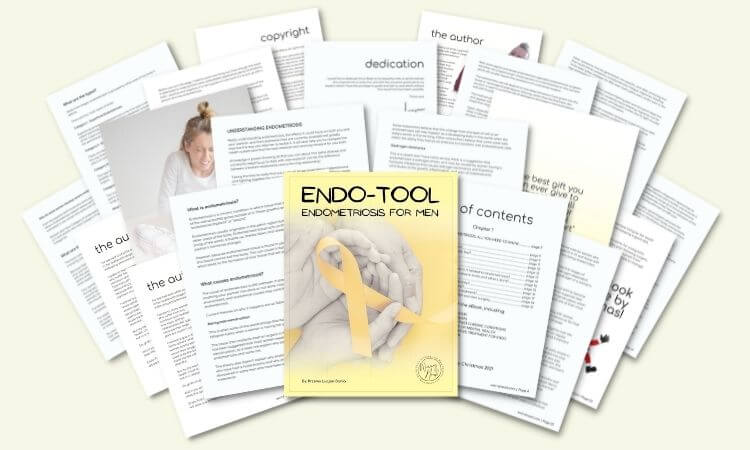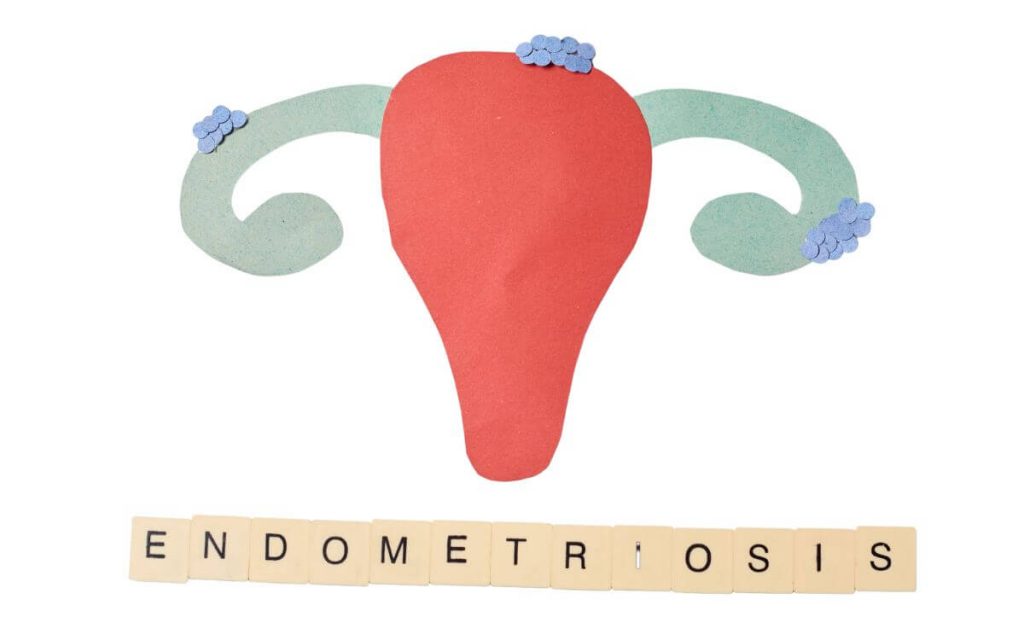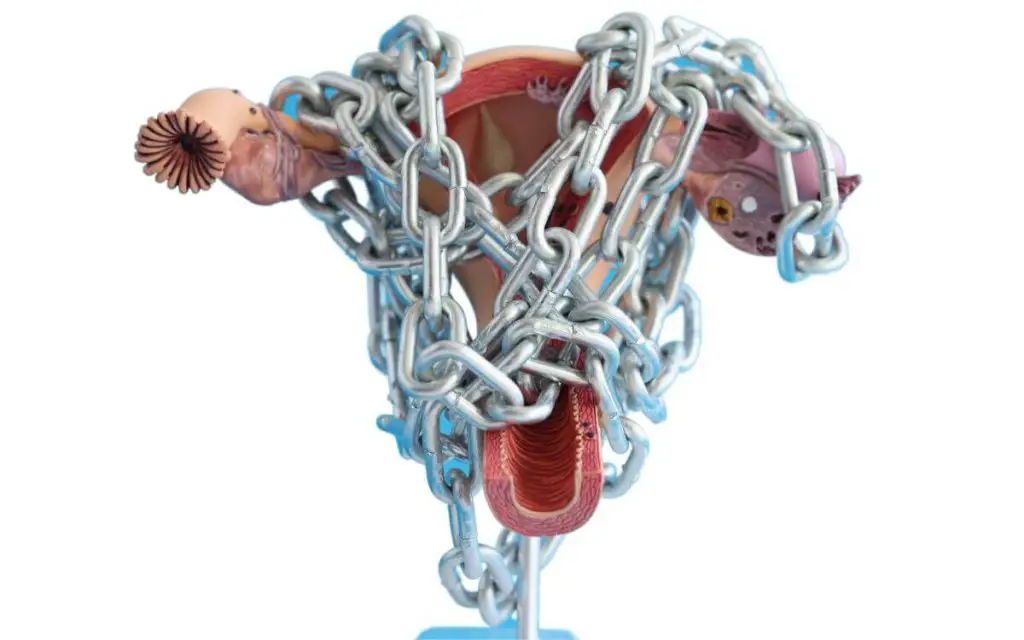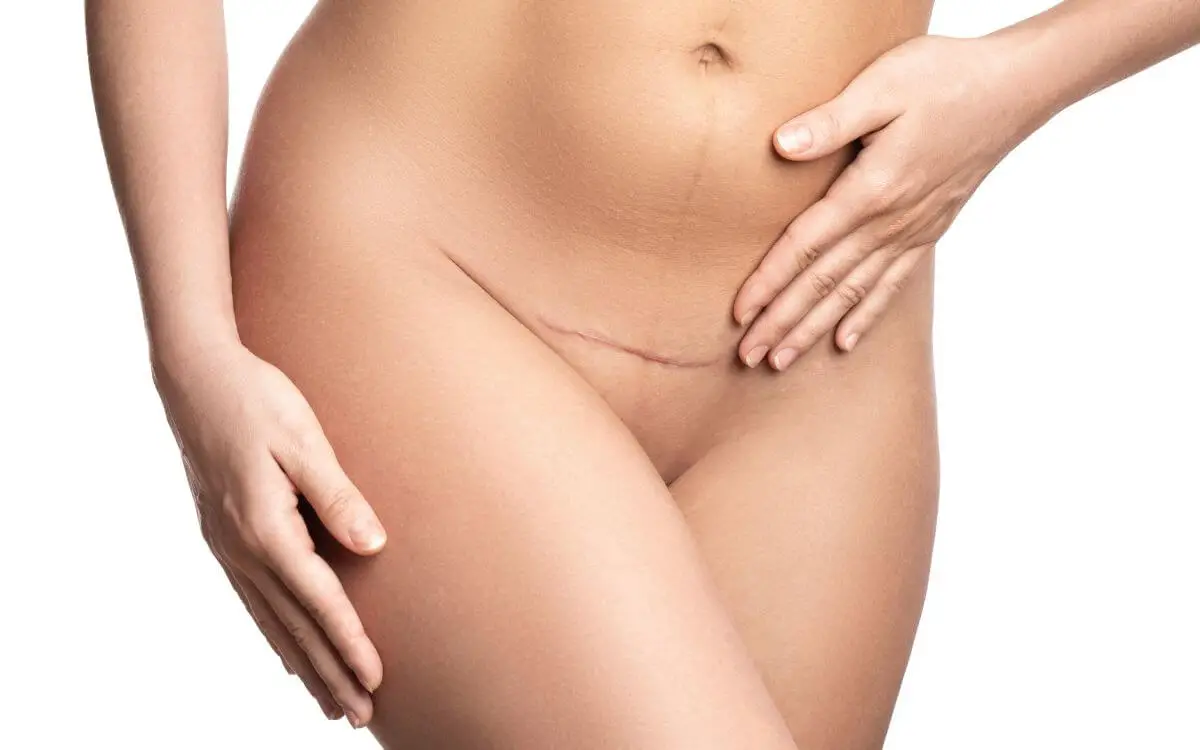Adenomyosis vs endometriosis.
Adenomyosis and endometriosis both involve the presence of endometrial tissue outside of the uterus, but adenomyosis specifically affects the muscular wall of the uterus, while endometriosis is characterized by endometrial tissue outside of the uterine cavity.
My wife suffers from stage IV deep infiltrating endometriosis and fibromyalgia disorder.
She doesn’t have adenomyosis, however, one of her ovaries is attached to her uterus by one endometrioma – a cyst that is characterized by the presence of blood inside of it. This causes her extreme pain by pulling on her uterine lining whenever she twists or makes a sudden movement.
I care about women’s health and this is why I decided to explore the difference between both endometriosis and adenomyosis, thinking that she could have both.
Adenomyosis vs endometriosis.
When it comes to adenomyosis vs endometriosis, it is important to know the difference between endometrial tissue and adenomyotic tissue.
Endometrial tissue is the layer of cells that line the inner wall of the uterus whereas adenomyotic tissue is a thickened, abnormal growth of endometrial cells within the muscular wall of the uterus.
What causes your symptoms?
Every person living with adenomyosis or endometriosis will experience different symptoms, so for example, depending on where the endometrial tissue grows, endometriosis pain will occur.
Common adenomyosis symptoms include painful, heavy periods as well as chronic pelvic pain and pressure. Endometriosis symptoms may also cause pelvic pain and pressure, as well as painful sexual intercourse, heavy menstrual bleeding, abnormal bleeding, and infertility.
It is important to note that adenomyosis and endometriosis can coexist, causing a combination of adenomyosis and endometriosis symptoms.
Living with adenomyosis or endometriosis…
Life with adenomyosis or endometriosis can be difficult, especially when it comes to the physical and emotional impact of the symptoms.
To adjust to the new normal, it is important to get familiar with your condition and its symptoms, manage your stress levels, and practice healthy habits such as eating a balanced diet, exercising regularly, and getting adequate sleep.
It’s also important to have an open dialogue with your intimate partner about your condition in order to understand and support each other.
Finally, it is essential to find a healthcare provider who understands adeno or endo and can provide the right treatment plan to help relieve your symptoms.
The best way to manage adenomyosis and endometriosis is by finding the right combination of treatments that work for your individual needs. It is important to remember that adeno or endo does not have to define you.
If you want to learn more about endometriosis, I wrote an “Endo-Tool, Endometriosis for Men” e-Book.
You can get the 1st Chapter of the e-Book for FREE, and if you like it, you’ll get a Whopping 33% Discount on the Whole Book, plus discounts on other helpful tools. You have nothing to lose but a lot to gain!
The first chapter alone contains all the comprehensive medical knowledge about endometriosis, including:
- What is endometriosis?
- What are the symptoms?
- What causes endometriosis?
- What does endometriosis look like?
- What are the stages?
- What are the types?
- What is adenomyosis and how is it related to endometriosis?
- Why do some women develop severe endo and others don’t?
- Does endometriosis cause infertility?
- How is endometriosis diagnosed?
- Do types and stages affect the treatment?
- Recurrence of endometriosis after excision surgery.
FREE Chapter of “Endo-Tool”
Endometriosis e-Book for Men

Endometriosis.
Endometriosis is a debilitating chronic condition characterized by endometrial-like tissues that have grown outside of the lining of the uterus. This illness affects approximately 10% of women of reproductive age and endo scar tissue can be found on the ovaries or ligaments that support the uterus, bladder, intestines, and pelvic cavity.
Endometriosis has stages and types, therefore depending on the type and stage, it will cause different symptoms for different women.
Stages of endometriosis.
In short, endo has four different stages, they are:
- Stage I – minimal
- Stage II – mild
- Stage III – moderate
- Stage IV – severe
Types of endometriosis.
Endo also has different types, including:
- Superficial – endometrial implants on the surface of the uterus
- Ovarian – endometriomas or chocolate cysts located in the ovary
- Deep infiltrating – endometrial implants deep within the tissues of the pelvic cavity
Symptoms of endometriosis.
Common symptoms include severe cramps, pain during intercourse, pain with bowel movements, heavy bleeding, painful periods, nausea, vomiting, and infertility. Less severe symptoms include fatigue, diarrhea, constipation, and bloating (commonly known as endo-belly).
Endometriosis causes more than painful menstrual periods or just a few cysts, it may cause severe inflammation beyond pelvic organs, it can vary from person to person and often mirror other medical conditions, such as Irritable Bowel Syndrome (IBS).
Diagnosis of endometriosis.
If endometriosis is suspected, it is important to seek medical attention for diagnosis and treatment.
The healthcare provider will perform an assessment of the patient’s medical history, a physical exam, and order imaging tests such as transvaginal ultrasound or Magnetic Resonance Imaging (MRI), however, to accurately confirm the definitive diagnosis, laparoscopic surgery is usually recommended.
The healthcare provider will want to rule out other conditions such as endometrial and thyroid cancers.
During this type of surgery, healthcare professionals will insert a thin tube with a tiny camera through a small incision in the abdomen to look for adhesions, cysts, and endometrial tissue outside of the uterus.
Treatment options for endometriosis.
The treatment should include a traditional medical and a holistic approach. For example, traditional medical treatments include oral contraceptives, other hormonal medications, pain medication, and surgical interventions.
There is no cure for endometriosis but mixing surgical and interventional alternatives is the best way to stop retrograde menstruation, ease painful bowel movements, and treat endo.
Leaving hormonal treatments aside, for a more holistic approach to the management, it’s important to take into account the patient’s lifestyle habits such as diet and exercise routines in order to maintain a healthy balance in the body.
Additionally, risk factors for endometrial and thyroid cancers or other conditions causing painful periods, menstrual pain, and chronic pain.
Types of endometriosis surgery.
There are four main types of endometriosis surgeries:
- Laparoscopic incision – involves removing adhesions and cysts.
- Laparotomy – it’s a major surgery that removes adhesions, endometrial implants, and ovarian cysts.
- Hysterectomy – one of the more invasive treatments that remove the uterus completely.
- Uterine ablation – destroys the lining of the uterus to reduce the menstrual bleeding, but does not remove adhesions or endometrial tissue.

Adenomyosis.
Adenomyosis is a condition caused by the presence of adenomyotic tissue within the uterus. This adenomyotic tissue can cause similar symptoms to endometrial-like tissue and is often misdiagnosed as endometriosis.
Adenomyosis occurs approximately 1 in 10 women and can be caused by a variety of factors, including family history, previous surgeries, or hormone imbalances.
Symptoms of adenomyosis.
The primary symptom of adenomyosis is pain, usually in the form of menstrual cramps, however, adenomyosis can also cause heavy bleeding during menstruation and heavy menstrual periods. In some cases, adenomyosis can lead to infertility.
Diagnosing adenomyosis.
To diagnose adenomyosis involves an abdominal ultrasound, pelvic exam, and MRI or CT scan may be necessary.
In addition, blood tests and endometrial biopsies can be used to identify adenomyotic tissue (uterine tissue or uterine adenomyosis) and rule out endo or other conditions.
Treatment of adenomyosis.
You cannot cure adenomyosis. Treating adenomyosis depends on the severity and can include hormone therapy, non-steroidal anti-inflammatory drugs (NSAIDs), or surgery.
In certain cases, a hysterectomy may be necessary to remove adenomyotic tissue from the uterus. The uterine artery embolization can also be performed to improve adenomyosis symptoms.
It is important to note that adenomyosis and endometriosis are two distinct conditions and should be treated differently. Knowing the differences between adenomyosis and endometriosis can help ensure that the appropriate treatment is given.
Surgery for adenomyosis.
The surgery for adenomyosis is similar to that for endometriosis, however, adenomyosis surgery typically requires a larger incision and more extensive removal of adenomyotic tissue.
This type of surgery is usually more invasive and should only be performed by an experienced surgeon. Adenomyosis surgery can also be more complicated and may require additional treatments such as hormone therapy to reduce adenomyotic tissue.
Sometimes adenomyosis surgery may not be necessary as adenomyotic tissue can sometimes regress on its own, and menstrual periods can ease.
If adenomyosis is left untreated, it can cause adhesions and cysts, as well as infertility.
Therefore, it is important to consult your doctor if you have adenomyosis and discuss the best treatment options available.

Summarising adenomyosis vs endometriosis.
Endometriosis and adenomyosis are two medical conditions that affect women of reproductive age and can be very painful, debilitating, and frustrating.
Endometriosis can be found on organs such as ovaries, fallopian tubes, and bowels in addition to other areas in the body, whereas adenomyosis is mainly confined to the walls of the uterus. Adenomyosis can cause severe pain during menstruation due to the thickening and enlargement of the uterus caused by adenomyotic lesions.
Endometriosis may also cause pelvic pain and heavy menstrual bleeding due to inflammation caused by the adhesion of endometrial tissue outside the uterus.
Treatment for adenomyosis and endometriosis includes medications such as hormones, pain medications, and surgery to remove abnormal tissue or adhesions. Treatments may vary depending on the severity of the symptoms. It is important to consult a physician for a proper diagnosis and a treatment plan.
Both adenomyosis and endometriosis can cause infertility in women due to the adhesion of abnormally placed endometrial tissue. Adenomyosis may also cause miscarriage in pregnant women due to enlargement of the uterus while endometriosis can lead to blocked fallopian tubes making fertilization difficult.
Early detection and correct management of adenomyosis and endometriosis are important to prevent infertility and other complications.


About Me
Hi, I’m Lucjan! The reason why I decided to create this blog was my beautiful wife, who experienced a lot of pain in life, but also the lack of information about endometriosis and fibromyalgia for men…
